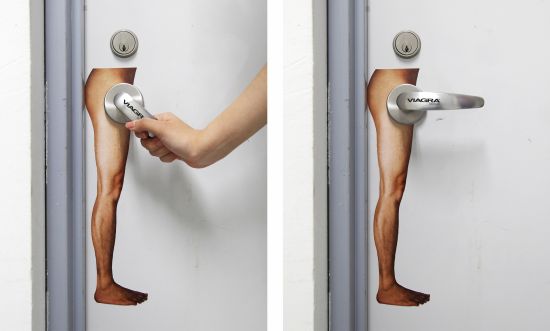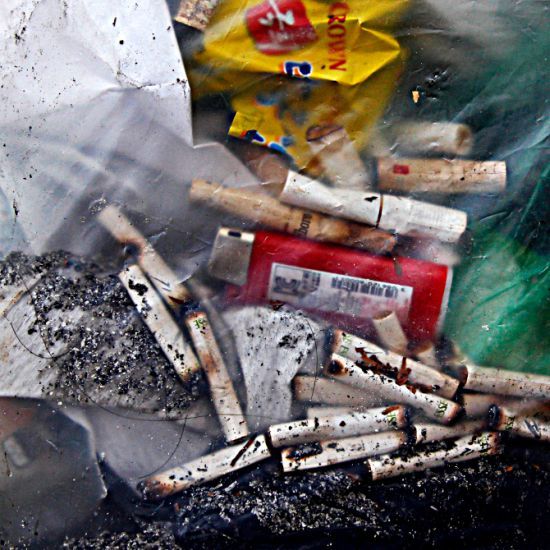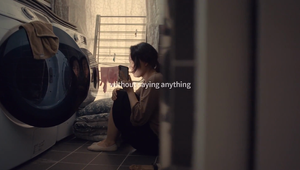
New Talent: Wijeon Lee

Wijeon Lee’s pathway to the ad industry was an unusual one. Prior to life in the creative industries, he studied physical therapy and served as a medic in the army. But he just couldn’t ignore his creative itch. He enrolled in a new college, began studying visual communication design, and landed himself at a job at Cheil in his native South Korea. His student work has been recognised by international creative award shows, such as New York Festivals, and he now works on Cheil’s Samsung account, getting to grips with some of the world’s most advanced and forward-thinking technology. Wijeon chatted with LBB’s Addison Capper about his cat, the irony of people’s rubbish, and a whole host more.
LBB> Where did you grow up and what kind of kid were you?
WL> I was born and raised in Daegu, a city in the South of Korea. I was just an ordinary kid with nothing special to dream about or have passion for. I liked to hang around with my friends or play soccer. I particularly liked computer games; in Korea, if you wanted to be popular among friends, it was really important to be good at computer games.
LBB> Prior to pursuing the creative industries, you majored in physical therapy and served as a medic in the army for two years! That’s quite the change in profession… what inspired the move?
WL> I was serving as a medic in the army after studying physical therapy for two years. I am not sure when it happened exactly, but at some point I was no longer excited about taking care of patients and had concerns about whether I wanted to have this job for the rest of my life.
While I was thinking about what interested me, my eyes fell on someone’s post on the Internet about something like the ‘50 Most Creative Ads’. I remember seeing many campaigns that used ambient media. I thought ‘I think I can do this just as well. I want to do it!’ All of a sudden, I felt this confidence and passion and that feeling kept evolving in my mind.
I continued to develop my interest and had a dream of becoming an art director. After I was discharged from the army I left school and decided to study visual communication design.
LBB> How did you explore your creative interests while studying / working in the army?
WL> At that time, my brother was in high school preparing for entrance exams to get into a college of fine arts, and my girlfriend was studying graphic design in college. So it was natural for me to be acquainted with design topics and works. When studying physical therapy, I had no interest or experience in any creative industry. But as I began to gain interest while in the army, I started reading related articles through magazines and the Internet, and went to art exhibitions when I was on leave.
LBB> What can you tell us about the experience of working in the army and the lessons learned while there?
WL> Two things I learned:
1. Kimchi is unexpectedly delicious in the U.S. Army
2. The power of growing a little more each day
When I was in the army we did one hour of physical training every day. I was able to do only 20 push-ups in the beginning, but by the time I left the army I could do 70 push-ups in two minutes. Now I am back to 20 push-ups so I’m not trying to show off my push-up skills. I’ve learned the effect of doing something consistently, and thanks to that habit, I was able to prepare myself to enter a new college with a different major and to work in the creative industries. I think that is the biggest lesson learned from serving in the army.
LBB> South Korea is a country that’s incredibly rich in modern technological ability, but also boasts huge cultural heritage. How does that influence your work as a young creative or designer?
WL> It is true that South Korea has accomplished a remarkable growth in technology, but these technologies are often under-utilised when we do projects due to numerous obstacles, such as cost and time schedule.
Nonetheless, what’s lucky about working as an art director at Cheil Worldwide is that we have many projects for Samsung, so we have a lot of opportunity to try cutting-edge technology. Even with the same content, your work can stand out more when delivered through new technologies and new media. Having such foundations to experiment can be a huge advantage and an attraction to creatives like me.
Since the culture of South Korea is as natural as air to me, it is hard for me to specifically point out how its heritage has an influence on me, but presenting projects that integrate the cultural heritage of Korea can give a new and fresh impression, so I think it can become part of a good strategy.
LBB> With that above question in mind, I’ve read that you have a keen interest in traditional Korean designs, and actually designed tableware based on the shapes and patterns of traditional drums and gongs. What inspired that project? Tell us about it.
WL> This work was created in collaboration with my brother. When my brother was studying ceramic design in college I wanted to create something fun together. Modern interpretations of traditional designs always results in works that are interesting. So I came up with an idea of making tableware inspired by the shape of traditional musical instruments. I started by creating the shape of a bowl by dividing janggu, an hourglass-shaped, double-headed drum, followed by other tableware.

LBB> I have to ask you about your student project for Viagra. Genius! How did that idea spring to mind?
WL> When I was studying visual communication design, I joined the school’s advertising club. We held an annual exhibition on campus, and that year’s topic was ’19 and over.’ The best thing about student work is that there is no restriction. I searched for the media within the school that could deliver the message most effectively, and as I opened the door to my classroom the idea sprang to my mind. I would like to thank my friend Park who willingly stood in front of the camera for the work.

LBB> I also LOVE ‘Things You Threw Away Yesterday’ – a person’s rubbish is an oddly personal thing, eh? When did you first start working on that and what made you want to pursue it? And, how did you go about getting the pictures?
WL> This project started one autumn day in 2013. I was walking around a residential area and saw things like a condom box, instant noodle cups and soda bottles through some garbage bags. The door of the house was closed but being able to take a peek into their lives through a garbage bag felt ironic. The photo project series started with a purpose to show the face of a modern society where your life is defined by what you consume. The process is simple. I just took pictures of garbage bags that contain interesting lives while walking around.

LBB> When you’re not working, what do you like to do with your downtime?
WL> I started learning piano last July. I am practicing very hard with the thought of making my debut as a pianist when I’m around 60 years old. The rest of my time is devoted to my cat. Follow @wigo_the_cat on Instagram.













